The story of snus in Sweden and the U.S.
Historically, only two countries in the world have had a high volume of users of the product. Here’s why: A history of the stuff that's not snuff.
-
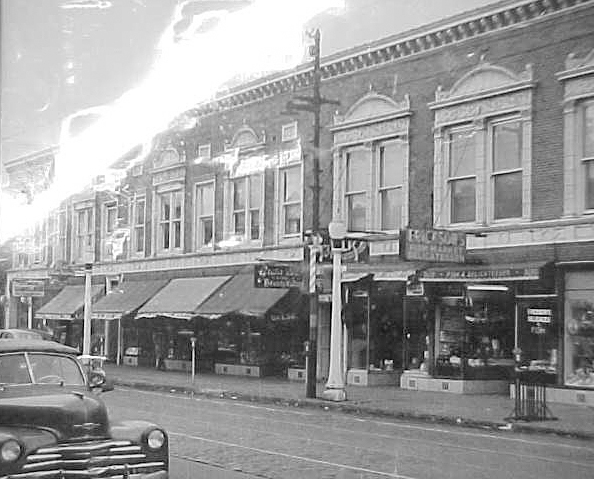 Literal rivers of snus were flowing throughout Swedish North America. Here, the old Andersonville neighborhood in Chicago showing the south side of Clark Street with Erickson’s Delicatessen.
Literal rivers of snus were flowing throughout Swedish North America. Here, the old Andersonville neighborhood in Chicago showing the south side of Clark Street with Erickson’s Delicatessen. -
-
The story of snus in Sweden and the U.S. — created to offer a historic background to a recent feature on whether Swedish snus represents a remedy for many of the evils of smoking tobacco: A safer alternative to smoking? As mentioned in an editorial from the editor and publisher — Is it or isn't it? — if you believe all tobacco is bad or shun all potentially addictive substances (which include coffee and tea among others), you may feel better off skipping the article.
-
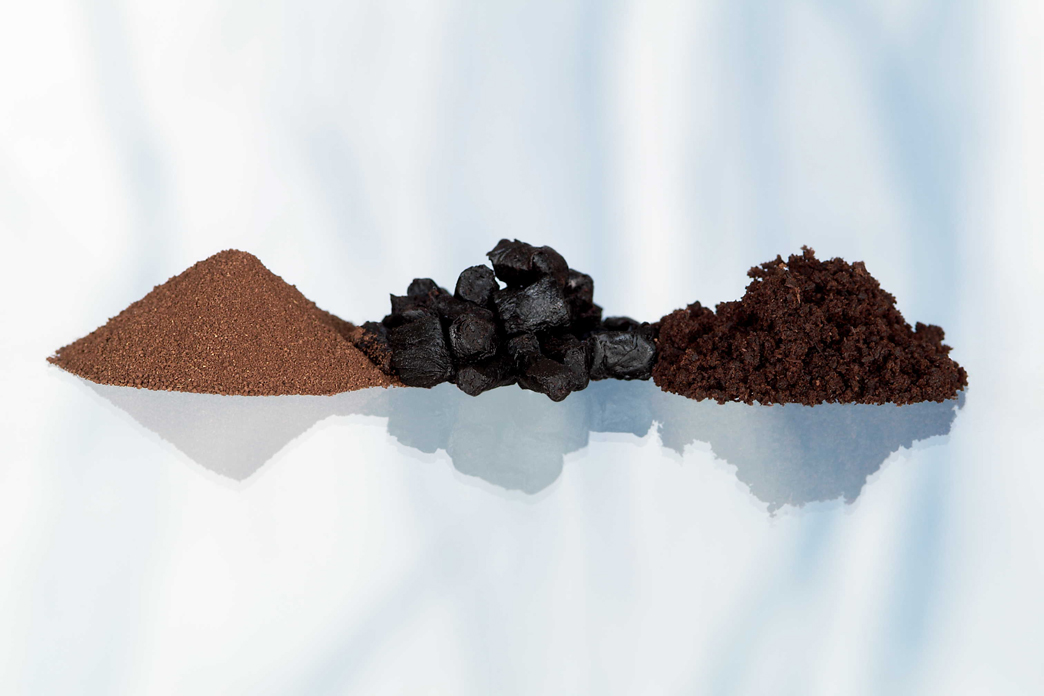 It is tobacco, yes, but could Swedish produced snus be <a href="http://tinyurl.com/z3gsrlq" target="_blank">“a safer alternative to smoking?”</a> Historically, only two countries in the world have had a high volume of users of the product. Here’s why.
It is tobacco, yes, but could Swedish produced snus be <a href="http://tinyurl.com/z3gsrlq" target="_blank">“a safer alternative to smoking?”</a> Historically, only two countries in the world have had a high volume of users of the product. Here’s why. -
-
The use of tobacco probably dates back to prehistory, and accounts of its modern origins vary. Rewinding the clock to the sunset of the 1400s, Columbus and those to follow were said to observe the native Arawak Taino people funneling powder into their nostrils using a Y-shaped pipe they called a tabago. The leaf they mulched to create this powder got the same name — anglicized as “tobacco.”
-
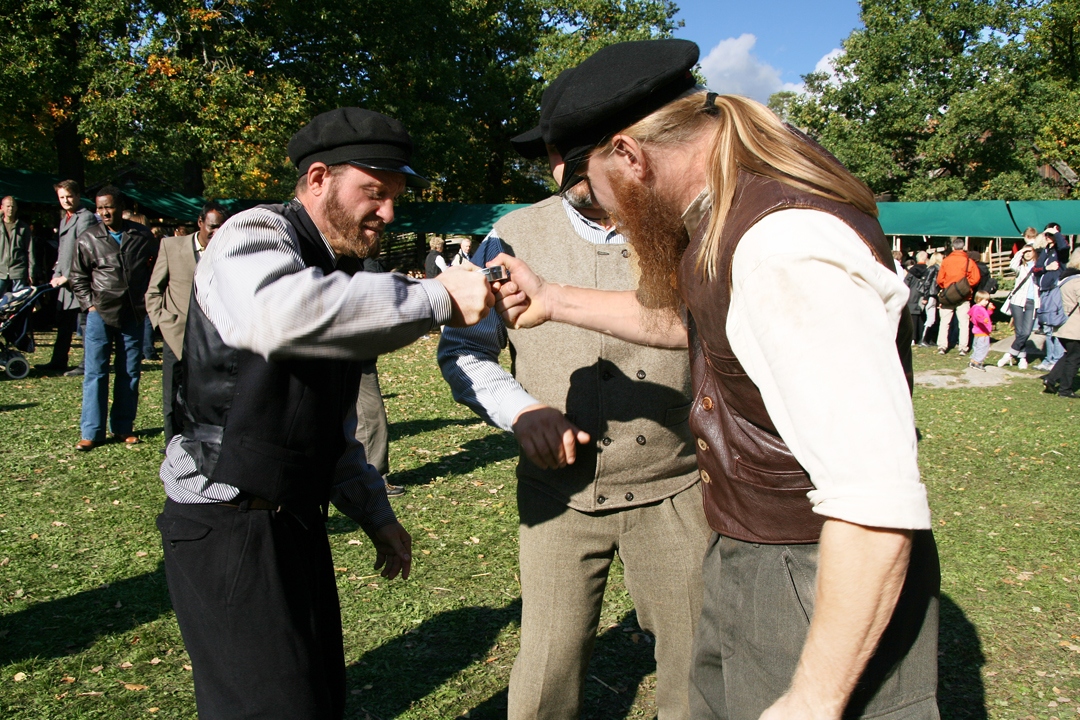 Safer for sure when the snus can is used like this—as the center piece for a two-man tug-of-war called snusdrag, a typical Swedish game from the 19th century, a tug-of-war over a metal snuffbox. (The image is from a performance by Telge Glima, which will once again visit Labor Day weekend's <a href="http://www.scanfest.org/" target="_blank">“ScanFest 2016 in New Jersey”</a>) See you there?
Safer for sure when the snus can is used like this—as the center piece for a two-man tug-of-war called snusdrag, a typical Swedish game from the 19th century, a tug-of-war over a metal snuffbox. (The image is from a performance by Telge Glima, which will once again visit Labor Day weekend's <a href="http://www.scanfest.org/" target="_blank">“ScanFest 2016 in New Jersey”</a>) See you there? -
Another believable explanation of the name focuses on the Italian word tobacco, which existed centuries before Columbus and was used to describe medicinal herbs derived from Oriental leaf mixtures.
-
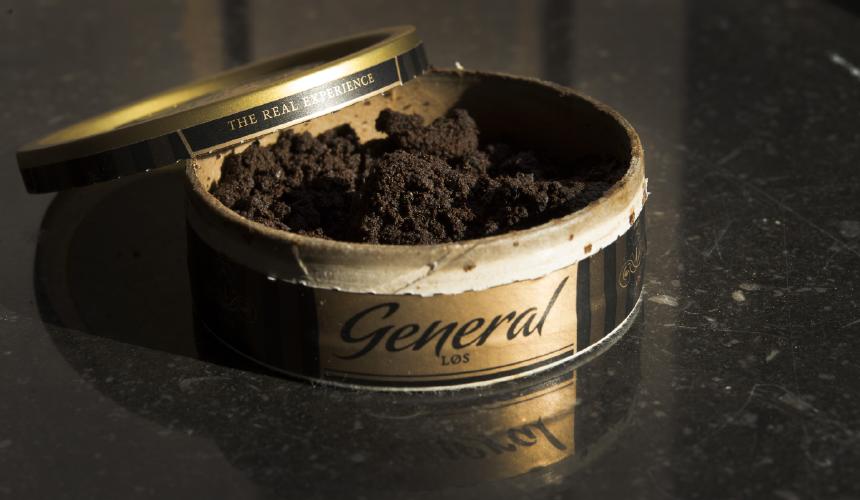 The traditional “loose” snus is, although produced and used differently, similar to American so-called dip products. (SImilar but, far from the same)
The traditional “loose” snus is, although produced and used differently, similar to American so-called dip products. (SImilar but, far from the same) -
In any case, when Columbus set foot in the New World, the American-style leaf that’s known today as tobacco had been both chewed and smoked far and wide for centuries. And within 50 years of its debut in Europe, it was sprouting in home gardens throughout the Iberian Peninsula.
-
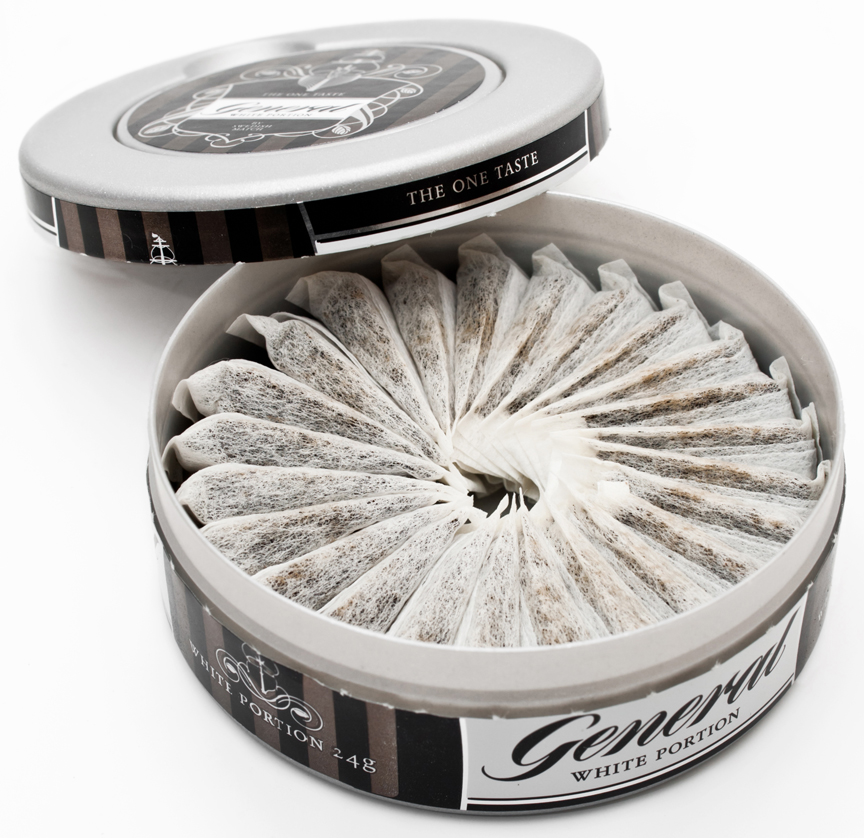 Pouches of portion snus or mini pouches are a more recent addition popular with both men and women.
Pouches of portion snus or mini pouches are a more recent addition popular with both men and women. -
Early uses for tobacco included application as an insect repellent, and in medicine it was a cure-all for maladies ranging from headaches to colds to cancer. All used forms of dried and pulverized tobacco, a preparation that was initially sniffed into the nostrils and known as “snuff.” Snuff was all the rage among white-wigged aristocrats throughout Europe’s parlors and palaces, where the elite upper classes sniffed it from fancy jeweled mini-boxes and sneezed it onto lace handkerchiefs. A century later, when the working class folks chopped their revolutionary way through the finest heads in Europe, commoners came to detest snuff as much as they hated their overlords who used it.
-
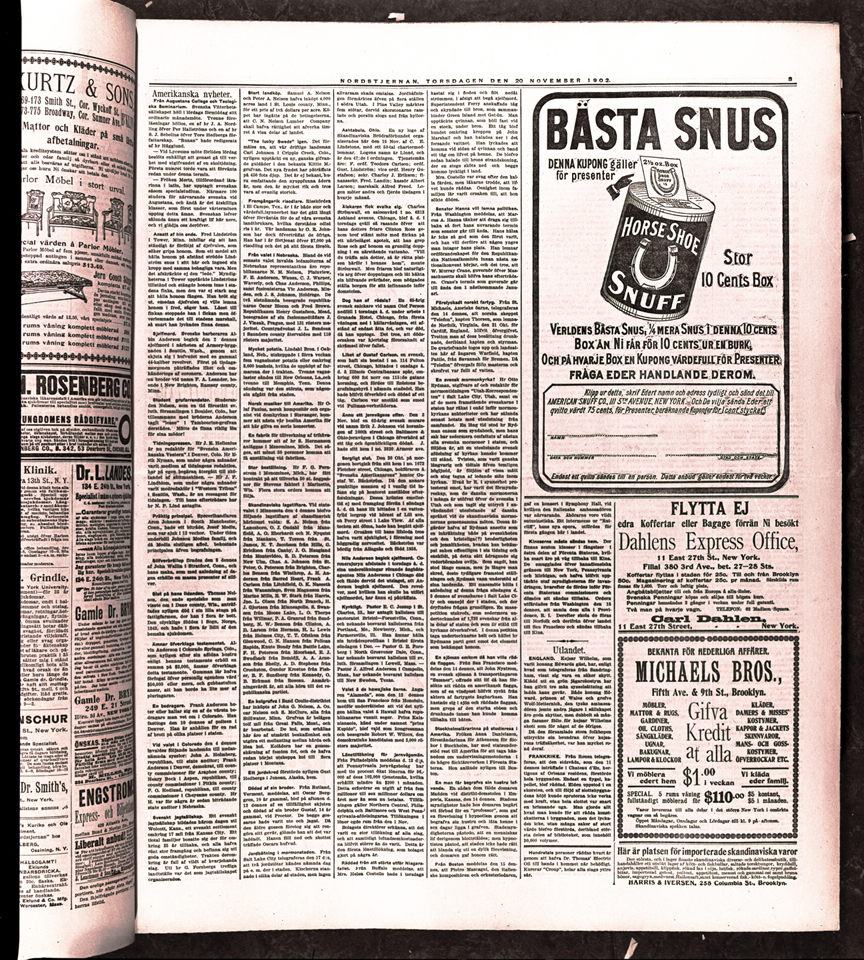 First mail order ad in Nordstjernan on Thursday, November 1902—what else, but snus?
First mail order ad in Nordstjernan on Thursday, November 1902—what else, but snus? -
Sweden discovers tobacco
Tobacco first appeared in Sweden somewhat later, in 1638, when a ship returning to Stockholm brought some back from the Swedish colony on the Delaware River. Ground and dried, tobacco found uses as a medicine by a French physician, Jean Nicot. As a result, the famous Swedish botanist Carl von Linné named the basic substance in tobacco “nicotine” in Nicot’s honor. -
Tobak became so popular in Sweden that it was a major farm crop within the century. By the end of the 1700s, tobacco was grown in as many as 70 Swedish towns. At that time, the Swedes invented the under-the-lip alternative to snuff that is known today as “loose” snus. Rather than being sniffed, the tobacco is instead placed in the mouth against the gum line, where the nicotine is easily absorbed.
-
Snus was originally only sold in the form of a loose, moist powder that can be taken a bit at a time with the fingertips and rolled into a small ball or cylinder (there’s a handy tool available for this today). The end result is often referred to as a pris (pinch) or prilla or prell (slang for pris) and is placed inside the upper lip.
-
The foundation of every snus “recipe” entails choosing the very best tobacco leaves, cutting and running them through a crusher, milling them in a flour-like grinding apparatus, and sifting them over and over to obtain a fine powder. Precise amounts of water and salt are added, the mixture is spread in a flat tray and it is then allowed to “sweat” (age or lightly ferment). This phase of the process, conducted in temperature-controlled rooms heated by wood-burning stoves, originally took up to six months.
-
The next step is flavoring — and the lion’s share of any snus’ appeal comes from this part of the process. After a week of sweating, the snus is blended with potash and alum. Depending on the desired taste, further additions could include cognac, whiskey, liquor, ginger or other flavored oils.
-
Soaring popularity
It wasn’t long before Swedes embraced this new way to enjoy nicotine. Snus became popular and ousted both the politically incorrect snuff as well as more expensive chewing tobacco. Between 1810-1820, snus consumption abruptly rose to dominate the Swedish market’s tastes. -
Although Sweden isn’t known anymore for growing the crop, tobacco became one of the country’s most important agricultural pursuits, and it remained so until the 19th century. The use of tobacco in various forms continued to grow, and a tax was levied on it to control consumption. The tax was progressive and linked to social rank; nobility, priests and burghers had to pay more to smoke or use snuff than farm hands and maids, for example, while soldiers, boatmen and miners were exempt from the tax.
-
In 1822, Jacob Fredrik Ljunglöf began manufacturing snus with an entirely new production process – one that shorted the fermentation phase down to just one week and would ultimately boost the product’s popularity tremendously. His “Ettan” brand (meaning “Number One” — an indication of its superiority) overtook the Swedish market. Only one producer was larger than Ljunglöf at the turn of the 20th century, and Ettan’s world placement was second; as validation of their firm’s respect, one of its devoted customers was Pope Leo XIII.
-
Today, Stockholm’s Tobacco Museum is home to many of the most popular recipes for snus. Ljunglöf’s Ettan is not one of them, however – the founder’s son withheld it when, in 1916, the entire tobacco industry was nationalized to pay for military and pension costs. Today’s production is said to be a close replica of the original, but according to legend, Ljunglöf burned the only written copy before dying and took the secret with him to the hereafter.
-
Snus in America
From the mid-1800s to the onslaught of the Great Depression, more than a million Swedes immigrated to America. They brought their yearning for Swedish snus with them (although Ljunglöf’s recipe was a secret that never left Sweden). -
They commiserated in their letters home. The newspaper "Göteborgs-Posten" in 1869 printed one that stated: “The real trouble for the Swedes [over here] is that tolerable snus can't be bought for love or money." Nearly every Swedish enclave in America had its own newspaper, and notices appeared every time a new shipment of snus arrived from Sweden.
-
But that was a rare occasion. Snus was classified as “fresh produce” and had to be refrigerated or consumed while fresh. Modern Sweden classifies snus as food, and its handling is regulated in the Swedish Food Act. There were no means for adequate preservation during the long Atlantic passage, so few parcels from Sweden could deliver the satisfying enjoyment that Swedish-American customers remembered from “back home.” It was not until metal foil wrapping was invented, and subsequently used by Ljunglöf for his Ettan brand, that reasonably fresh Swedish snus finally reached the Atlantic port cities of America.
-
Still, fond memories of fresh Swedish snus did not deter Swedes from attempting to produce their own varieties. After all, the tobacco in Ljunglöf’s snus came from Virginia! But the trick of treating and preparing it defied repetition, even by American tobacco companies, who resorted to adopting Swedish brand names or buying existing factories for such brands as “Copenhagen” or “Red Seal” (the latter, under the brand Röda Lacket, is one of Sweden’s most popular brands to this day). Still, their efforts fell far short of matching the taste of the original, authentic snus.
-
Despite complaints about poor quality by Swedish-American snus consumers from coast to coast, they nonetheless continued buying and trying new versions of the product, and did so in astounding volumes.
-
Literal rivers of snus were flowing throughout North America — the aftermath of consuming and flinging aside the product. In Chicago, Swedes concentrated in a neighborhood along Chicago Avenue, and snus usage was so abundant that the street was nicknamed “Snoose Boulevard.” Snus-using throngs of thousands of Swedes crowded here in the 1800s as they stopped-over in their quest for opportunities elsewhere in the prairie or western states. Between the boarded sidewalks that paralleled railroad tracks in the middle of the street grew heaps of discarded snus remains. It is repulsive to imagine how the stench and mire must have wrinkled the noses of non-Swedish passersby, especially during Chicago’s sultry summer months.
-
Neighborhoods in Jamestown, Seattle, Vancouver, Winnipeg and other towns that supported sufficiently large Swedish populations also had their own “Snoose Boulevards.” Probably the most colorful were Payne Avenue in St. Paul and Cedar Avenue in Minneapolis. In the heart of what had become America’s “Swedish Metropolis,” Cedar Avenue was a real civic entertainment center that offered attractions such as dance halls, billiard parlors, saloons, stage performers and shows from Sweden. Lively celebrations kept the beer and snus flowing for recently-landed Swedes in America.
-
The future of snus
Essentially, two types of snus are still marketed today: the traditional “loose” snus, and the more popular portion snus, which was introduced in Sweden in 1973. Portion snus, as the name implies, is uniformly measured and packaged powder in small paper pouches made from the same material as teabags. It comes in smaller quantities than the loose powder, and more significantly, the little bags are easier to handle and discard. -
Historically, snus has been sold in small tins, which were lavishly made of porcelain, wood, silver or gold a century ago. Most of today’s round, thin snus canisters (which resemble a hockey puck in shape) are made of compressed paper or plastic.
-
A few years ago the world’s major snus manufacturer, Swedish Match, founded what is being called the world’s most advanced snus factory, with a production capacity of some 120 million cans per year, and it is devoted exclusively to portion snus packages.
-
Mini pouches of portion snus are a more recent addition popular with women. Introduced a few years ago, these are available in flavors including mint, licorice and eucalyptus. Because it is about half the size of its big brother in the portion snus family, women can have it under their front lip and its presence is hardly noticeable.
-
Don’t be surprised someday to find flavors like lemon, orange — or maybe even chorizo. In the old days, snus lovers judged their product by its color. But with the new packages of portion snus, it’s purely a matter of taste, so creativity and originality play a big part in the marketplace nowadays.
-
Swedish Match and the snus General recently launched a cooperation with Swedish whisky brand Mackmyra and earlier campaigned a luxury edition of its snus flavored by Magnus Nilsson och Fäviken, Michelin fame. Don’t be surprised someday to find flavors like lemon, orange — or maybe even chorizo. In the old days, snus lovers judged their product by its color. But with the new packages of portion snus, it’s purely a matter of taste, so creativity and originality play a big part in today’s and tomorrow’s marketplace.
-
Ulf Barslund Martensson
-
-
